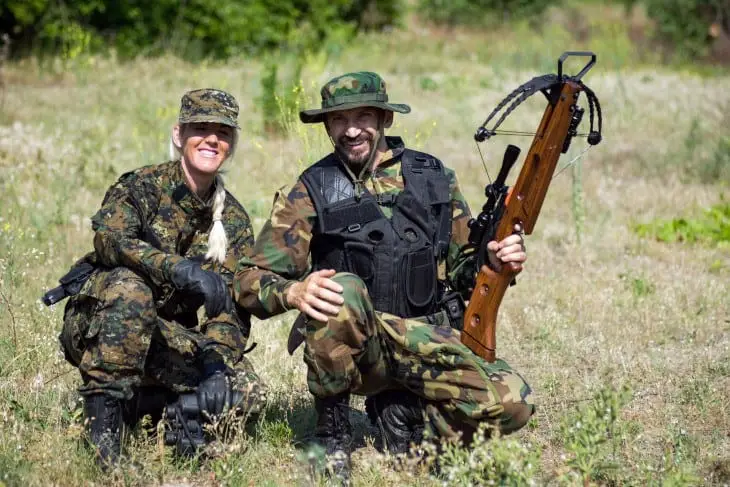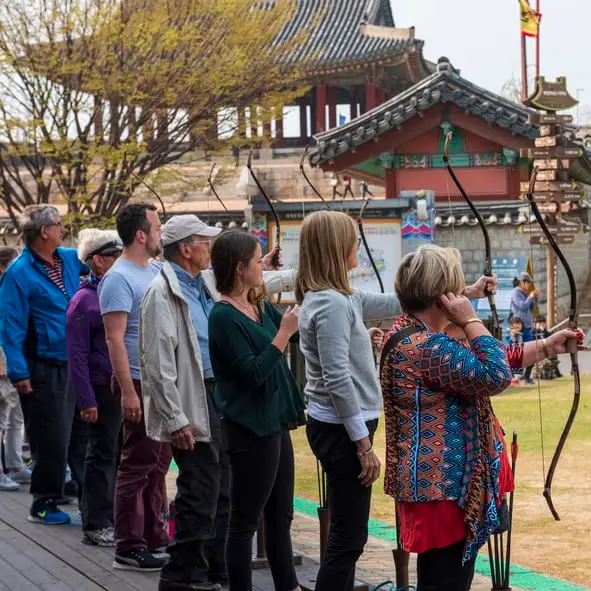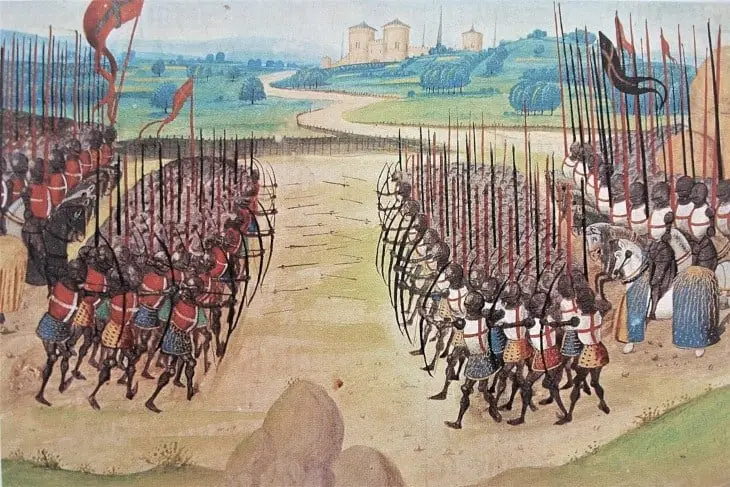One of the biggest challenges to getting into bowhunting is simply choosing a crossbow. There are many different options to take into account that we’ve listed below:
Compound vs Recurve Crossbows
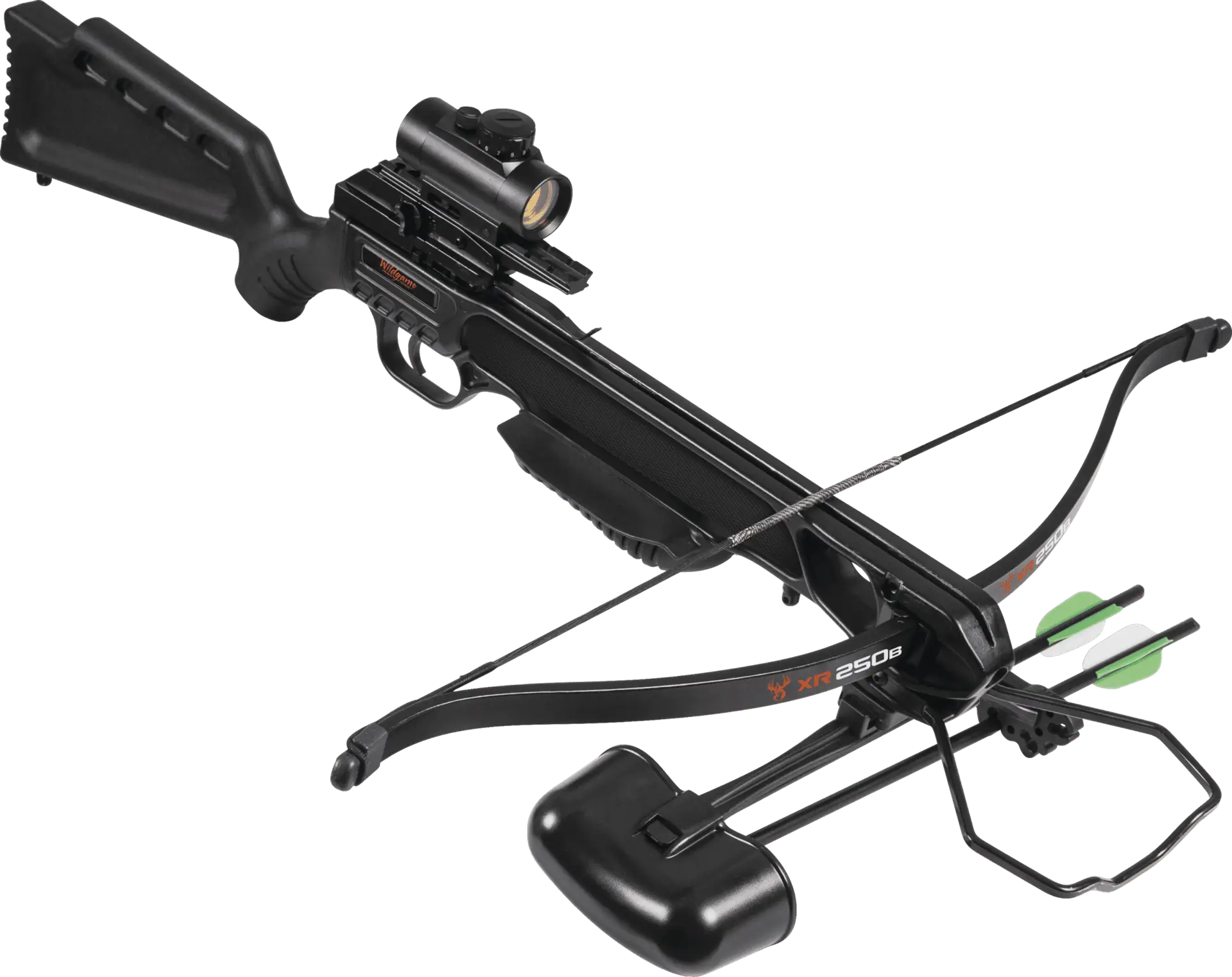
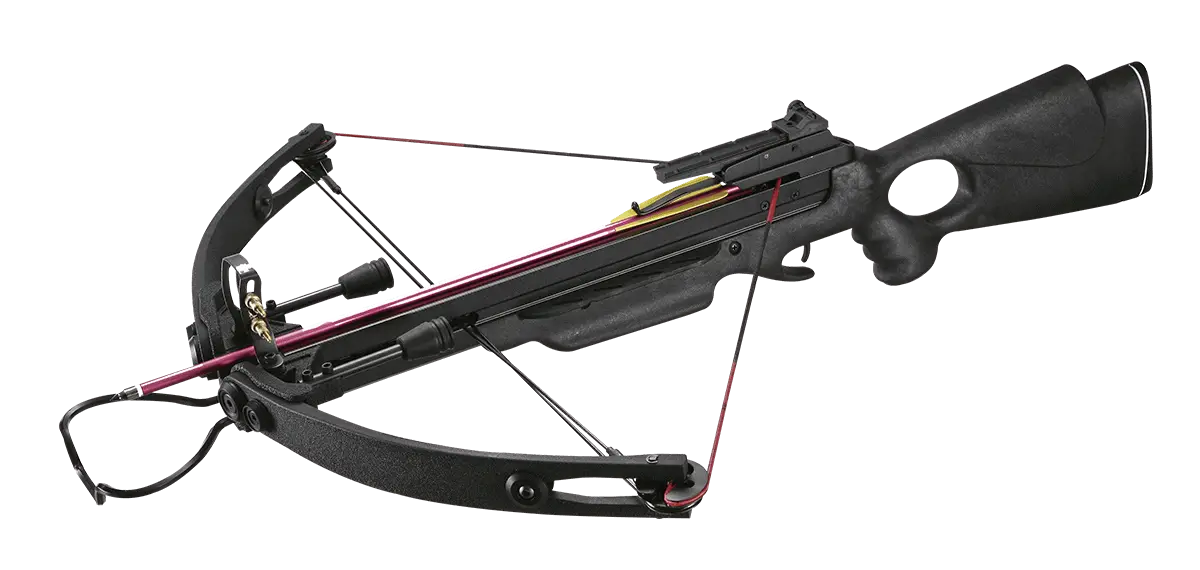
The differences between compound and recurve crossbows are largely the same as between regular compound and recurve bows. Compound bows take advantage of simple machines to provide more speed and power all while being easier to draw. They manage to do this while still decreasing the width of the bow, something important for hunters.
For regular bows, compound versus recurve is mostly a matter of taste. To an extent, this matters for crossbows too. Recurve crossbows are more classic, and they can be more challenging. If that’s your style, go for the recurve.
In general, though, if you just care about getting the most effective weapon, we recommend a compound. The increased speed and power means more lethal shots for hunters and better accuracy for recreational target shooters. Plus, the decreased axle-to-axle width means easier maneuverability and less noise.
Perhaps the main downside to compound crossbows is the maintenance. More parts means more upkeep and a higher probability of misfire on the hunt or at the range. If you’re a serious archer and willing to put in the time to maintain your weapon, then this isn’t a problem. If you want to be able to leave your crossbow in the garage for extended periods and just grab it for the occasional hunting trip, though, a recurve might be better.
Speed and Power
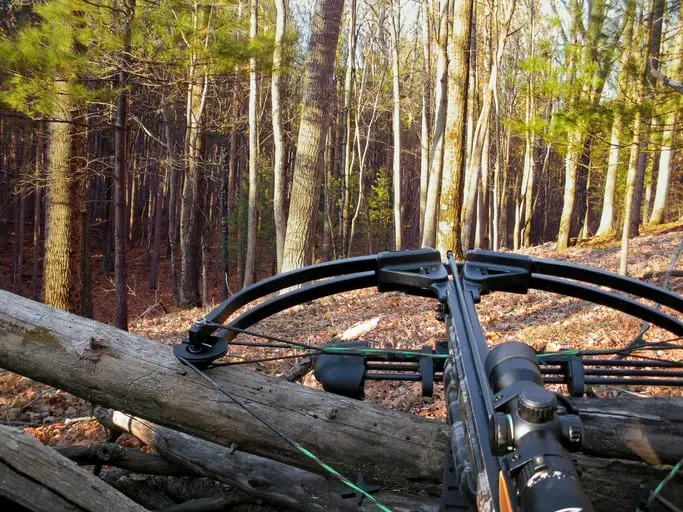
Speed is great, but it’s not everything. After all, humans were killing giant mastodons with longbows shooting at well under 200 FPS long before they invented crossbows with 400+ FPS, not to mention guns shooting bullets faster than the speed of sound.
When looking at crossbows, you’ll find their max speed measured in FPS, which stands for feet per second. Crossbows range from about 200 FPS at the slowest to 470 FPS at the fastest. Higher speed can have two main benefits.
First and foremost, it can help accuracy. As they fly, bolts naturally begin to fall towards the earth. If they travel faster, they have less time to do that before reaching their target. That increases your accurate range for hunting and is an obvious plus for target shooters.
Second, speed can translate to power which can mean higher lethality. Still, power involves a lot more factors like the weight of your bolt, your broadhead, etc. If you know your physics, velocity is only one part of the formula for power. Luckily, crossbows also have power stats based on standardized bolts. You’ll see this as the crossbow’s FPKE, which stands for foot-pounds of kinetic energy. While not that big a deal for recreational archers, power is essential for big game hunters.
The only reason to downgrade your speed and power besides wanting a challenge is that faster, more powerful bows are less forgiving of shooting errors. With a compound bow, this could be incorrect maintenance or syncing of the cams. It could also just be jerks or instability when you’re firing. Beginners probably want to go with something a little less powerful and work their way up.
Power Stroke and Draw Weight
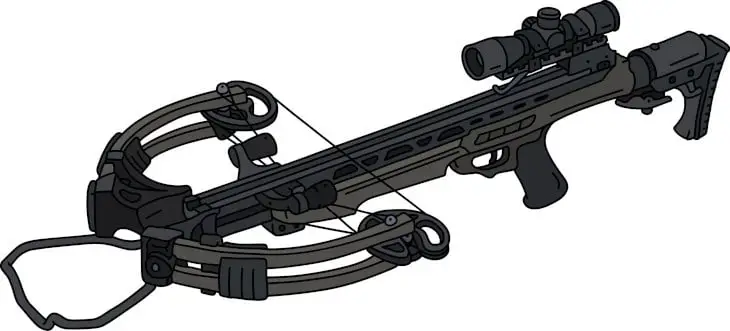
Power stroke is a somewhat confusing name for what’s basically a crossbow’s draw length. It’s the distance from the string’s rearmost pulled back and cocked position to its uncocked, at-rest position. Modern adult crossbows rarely have power strokes under 11 inches. Some states have minimum draw length requirements, among other things, so check those out before making a purchase.
Power stroke affects speed. A longer power stroke means the crossbow has more time to accelerate the bolt. This is especially true for recurve crossbows for which increasing power stroke is the main way that manufacturers increase FPS. It’s less of a factor for compound crossbows, though, which can take advantage of advanced cam systems to increase speed even without increasing the power stroke.
Draw weight is a similar measurement to power stroke. It measures how much force you need to pull the bowstring back and cock it. Most of that force gets transferred to the bolt, so higher draw weights mean more speed, more kinetic energy and more power.
Unlike a regular bow, draw weight doesn’t haven’t much downside because the trigger mechanism holds the string in place. Still, lighter draw weights can be easier to cock for new or young archers and therefore easier to maneuver for recreational target shooters. If you’re hunting, the more the better. For one, you need enough to meet your state’s laws, which typically require somewhere between 75 and 125 pounds. Beyond that, you need enough to take down the game you’re after. Here are some general guidelines:
Small game (rabbits, squirrels, etc.): 125+ pounds
Medium game (whitetail deer, goats, etc.): 150+ pounds
Large game (elk, small bears, etc.): 175+ pounds
Extra large game (moose, grizzly bears, etc.): 200+ pounds
Size and Weight
When it comes to crossbows, bigger isn’t always better. Especially for recurve crossbows, more length and limb width means more speed and power. However, it also means less maneuverability. It can be hard to carry through thick brush, which can also cause unwanted noise. Plus, heavy crossbows are harder to hold and aim, whether you’re hunting or on the range.
With compound crossbows, size is not even as much an indicator of speed and power, so you should try to keep the weight, length and limb width—known as axle-to-axle width or ATA on a compound crossbow—as low as possible. For young or slight archers, this can really help.
It’s just important to be aware of your state’s regulations. On top of minimum draw weights, many states have minimum lengths and limb widths you have to adhere to. For example, New York State requires a limb width of at least 17 inches, which is plenty for any compound crossbow, and a minimum overall length of 24 inches. Make sure to check your state.
Noise
Noise is a concern for bowhunters because crossbows tend to be a lot noisier than regular bows. The strings vibrate a lot after firing, and there’s a conspicuous thunk as the bolt leaves the crossbow.
Now, even the slowest crossbow fires so fast that the bolt doesn’t get to the quarry much later than the sound. It’s not enough for the animal to run away, but they still might jump or startle, leading to an inaccurate, nonlethal shot. If you’re taking the crossbow hunting, see what the manufacturer has done to decrease noise. This could be something like including string dampeners.
Scope
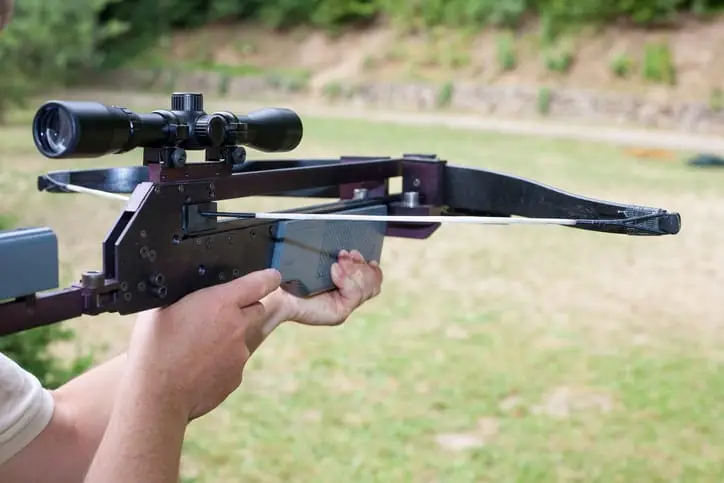
Aiming a bow or crossbow is considerably more complicated than aiming a gun. Arrows and bolts drop fast, losing a lot of altitude even over distances of under 100 yards. As a result, the scopes themselves have to be capable of providing accuracy at various ranges.
Modern optical scopes are the best for this. Many crossbows still come with open “iron” sights, but these can be less effective and therefore less ethical for hunting. Of course, recreational target shooters may still enjoy them for the extra challenge and nuance they add to the sport.
Recreational archers usually shoot from the same distance, so the scope only needs one dot or crosshairs. Even if you change distance, you can just sight in the scope. A hunter has no idea how near or far their quarry is going to be, though. That’s why a hunter should go for a multi-reticle scope that includes multiple dots or crosshairs accurate for different distances.
Types of Triggers
Triggers can vary widely between different crossbow models. Some are very light and take little pressure to fire the bolt while others have a “creep.” This means the farther back you pull the trigger, the harder it is to pull. It usually takes a significant amount of pressure to finally fire the bolt.
It’s hard to compare the value of different triggers. It’s mostly just a matter of personal tastes. Some archers prefer the ease and speed of a no-creep trigger. They can fire immediately. Others, especially those more accustomed to firearms, like the pressure of triggers with higher creep. It lets you feel the bow better and can allow for more accuracy and control.
For the most part, you’ll just have to experiment and find what you like. However, for someone new to crossbows, we recommend a trigger with at least some creep. A light trigger may fire too easily for someone who hasn’t practiced their accuracy.
Safety Features
Crossbows are serious, technologically advanced weapons. Safety should always be a top priority. Otherwise, you may hurt yourself, someone else, or damage your crossbow. Luckily, modern crossbows usually come with an array of safety features. You should really find a model that has them all, especially if you’re a beginner.
Trigger Safety
Just like guns, most crossbows have trigger safeties that prevent them from firing if turned on. This is perhaps the most important safety feature your crossbow should have. Without a safety, you could accidentally shoot yourself or a fellow archer, whether hunting or on the target range. Plus, many states require bowhunters to have safeties on their crossbows.
Basic crossbows feature manual safeties that you must engage after you cock the bow and keep engaged until you’re ready to shoot. These take a constant focus on safety, which you should have, of course. Still, even the most disciplined archers make mistakes. Modern crossbows sometimes come with automatic safeties that engage on their own as soon as you cock the bow. These provide an extra level of safety, so you should try to find one if possible.
Finger Guards
Crossbow strings can propel solid bolts with metal broadheads to nearly half the speed of sound. Imagine the damage they can do if they strike your fingers while firing. In fact, finger amputation is a real danger.
Unfortunately, simply trying to remember not to put your fingers in the way of the bowstring isn’t enough. Many archers, especially those who also shoot firearms, find it natural to raise a finger or two while aiming the bow, a habit that can be hard to break.
A truly safe crossbow simply doesn’t let you do that. It should come with a finger guard, two flared wings attached to the forestock. These go over your fingers and prevent you from raising them above the rail. Problem solved.
Anti-Dry Fire Mechanisms
Dry firing is when you fire the crossbow without a bolt in it. This may happen because you cock the bow and then accidentally pull the trigger before loading the weapon. Think of all the kinetic energy your crossbow produces, that big FPKE number in the specs. The crossbow normally transfers all this energy to the bolt, but if you dry fire, where does it go? Into the crossbow itself. Dry firing, besides rattling your bones, can seriously damage your crossbow. It can even break limbs and render the weapon unusable.
These days, manufacturers usually include anti-dry fire mechanisms that prevent the crossbow from firing without a bolt loaded. The only exceptions are budget bows trying to cut down costs in any way possible. This can be tempting, but anti-dry fire mechanisms can actually save a lot more money than their marginal cost, especially if they save you from destroying your bow and needing to rebuild it or buy a new one. Plus, they can keep you from taking a splintered limb to the eye.
Assembly and Takedown
Unless you pay a professional bow maker to do it for you, most modern crossbow models have to be assembled when you buy them. This usually isn’t a big deal and only includes a few steps like connecting the bow, which includes the limbs and rail, to the stock that you hold, and attaching the accessories. Sometimes it can be a tough choice because more home assembly can cut down costs but it can also be more difficult for a beginner who may not know how to put everything together properly. Try to minimize the amount of assembly required within your acceptable price range.
Takedown is a little different. It’s not just disassembling the crossbow but doing it in an easy way. This could be through interlocking parts and folding mechanisms. Takedown crossbows tend to be more expensive, and they’re usually only for bowhunters with very specific needs. For example, takedown bows are ideal for carrying with you on survivalist camping trips. For your average bowhunter or target shooter, it can make the weapon easier to store in the offseason. Whether that’s worth the price is up to you.
Accessories
We’ve already talked about scopes and safety features, which are some of the most important crossbow accessories. There are a few more, though, that are essentials.
Cocking Device
A cocking device makes things a lot easier even for the burliest bowhunter. Repeatedly cocking a bow with over a hundred pounds of draw weight can wear your out. A cocking device is basically a winch that uses simple machines to significantly decrease the draw weight.
Quiver
You need something to carry your bolts. Quivers can be attached to the crossbow itself or can be stand-alone accessories you wear on your belt or over your shoulder.
Sling
Slings let you hang your crossbow over your back and shoulders. Hunters definitely need one so they don’t have to hold their crossbow in their hands while walking through the woods or climbing into a tree stand.
Noise Dampeners
This doesn’t matter so much for target shooters, but hunters have to stay as quiet as possible. Noise dampeners are available for the strings, limbs and cams of your crossbow.
What to Look for in a Hunting Crossbow
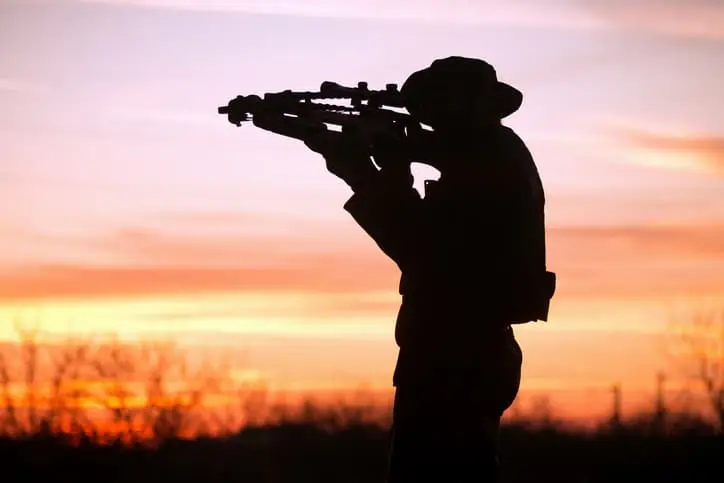
A hunting crossbow needs to have a few features you don’t otherwise need. For example, noise dampeners and silencers are entirely unnecessary for recreational target shooters but essential for hunters. Size is also a bigger deal because you’ll be carrying the bow for longer and maneuvering it through tighter spaces. Similarly, hunting crossbows often have camo finishes that help you hide from game.
The most important things to pay attention to on hunting crossbows are the power stroke and draw weight. These determine what game you’re able to hunt. You have to get a sufficiently powerful weapon.
Finally, there are a lot of laws that regulate bowhunting. Most states have minimum requirements for power stroke, draw weight and safety features. You don’t have to worry about these laws if you’re just target shooting, but you have to get a legal weapon for hunting.
What to Look for in a Recreational Crossbow
For the casual target shooter, most hunting crossbows work just as well. You just don’t need all the accessories. However, competitive target shooters may want more specialized competition models. These usually have lower draw weight and total weight than hunting models. They also come with more advanced scopes and involve precise tuning to get the most accuracy as possible out of the crossbow.

